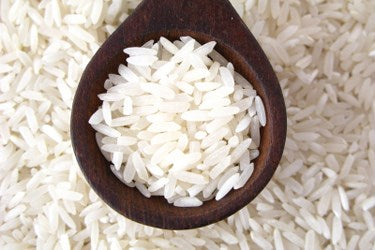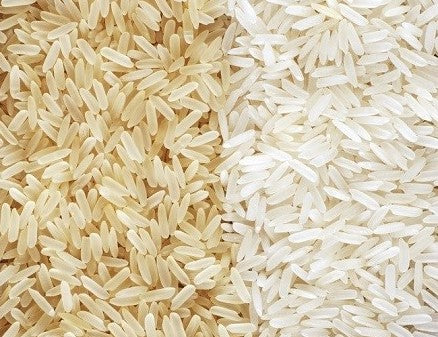One thing that is almost always a must in Asian cooking is rice. Whether it be brown, red or white rice, rice is something everyone in Southeast Asia eats with their dinner. (For information on the different types of rice, click here). Rice by itself is simple but still delicious, and as such is a great baseline to build flavours and textures with. This article will tell you all about Thai Jasmine rice, and compare it to other popular rices you may know.
Overview
1 - Did you know: Thai Jasmine rice is also called Thai Hom Mali rice?
2 - Do not confuse Thai Jasmine rice with White rice
1 - Did you know: Thai Jasmine rice is also called Thai Hom Mali rice?

Thai Jasmine rice, more commonly known as Thai Hom Mali rice, is a long-grain rice variety from Thailand. It is grown and supplied primarily in Thailand, but can be found in other parts of Southeast Asia such as Laos, Cambodia and South Vietnam. When hearing the words “Thai jasmine rice”, many think of the long-grain white jasmine rice, as it is the one most available to people. However, like traditional rice, Thai jasmine rice can come in many colours such as brown jasmine rice. The nutrients between brown rice and Thai brown jasmine rice are typically the same, and it has greater health benefits due to the added bran white jasmine rice does not have.
2 - Do not confuse Thai Jasmine rice with White rice

Many people may get jasmine white rice confused with white rice in general, but there are few differences you need to know.
For starters, jasmine rice is a type of white rice. White rice is an umbrella term used for any rice that is, well, white. White rice can come in short, medium and long-grain, and jasmine rice is an example of a long-grain white rice. An example of short-grain white rice is sushi rice, and an example of medium-grain rice is arborio rice. However, even that standard white rice you see in the supermarket has some differences when compared to jasmine rice.
Thai rice is known for its unique, aromatic fragrance. Most people describe white rice to have almost no smell, but jasmine rice can be described as having almost a popcorn and pandan-esque scent to it. White rice is also generally stickier than Thai rice, although neither are as sticky as glutinous rice.
In terms of nutritional value, both are types of white rice. Therefore, both jasmine and white rice have been processed and stripped of some of its fibrous parts. This makes the two types of rice equal in nutrition and health value.
We hope this article taught you some things about Thai jasmine rice. Thai jasmine rice or Thai Hom Mali rice is a delicious and essential thing that virtually all Asians have in their cupboards, and is an indispensable ingredient in Asian cooking.
Thai Jasmine Rice and many other types of rice can be easy to find in many Asian supermarkets around London. You can also get Thai Jasmine rice online for your safety during Covid-19.

